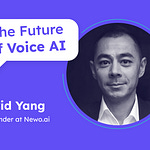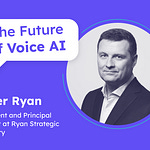In The Future of Voice AI series of interviews, I ask three questions to my guests:
- What problems do you currently see in Enterprise Voice AI?
- How does your company solve these problems?
- What solutions do you envision in the next 5 years?This episode’s guest is Tommy Gaessler, Lead Developer Advocate/Engineer, SDK at Zoom.
Tommy has been at Zoom for over 5 years and is leading the developer tooling and the Twilio Programmable Video to Zoom Video SDK migration. Tommy has worn many hats at Zoom including writing production code, building sample apps and NPM packages, managing products, supporting sales, speaking at conferences and meetups, writing dev docs and blogs, and growing the developer community.
Prior to Zoom, Tommy was a founding software engineer at Apostrophe Health, a Techstars Boulder startup which was later acquired by Centivo.
Recap Video
Takeaways
Zoom has an API and SDK-first mindset.
The SDK is a core technology, which they allow developers to build on without having to start from scratch.
Zoom’s SDKs see over 55,000 weekly installs across various package managers and platforms
Zoom has a world-class AI team led by CTO Xuedong (XD) Huang, previously CTO at Microsoft Azure AI.
Zoom's platform approach aims to open as many building blocks as possible for various use cases.
Zoom solves the challenge of integrating multiple AI components by taking a federated approach, allowing developers to integrate AI models within Zoom’s infrastructure, providing maximum flexibility and creating a cohesive system.
Prioritizing features in product management is a challenge due to the platform's scale.
Zoom's approach to problem-solving is taking a few steps back to fully understand it before solutioning.
Zoom's integrated approach to building technology helps them maintain control over core features.
Typically Zoom prefers building its own technology rather than buying or acquiring products.
Deciding when to build, buy, or use open-source technology is crucial.
Many open-source technologies are not great, prompting the need for better proprietary solutions that will benefit users.
By owning and continuously improving core technologies, Voice AI companies are more likely to become category leaders and own the use case.
Zoom is exploring AI use cases for enhancing sounds, like hearing a heartbeat better in telehealth.
A new voice AI inside Zoom Rooms allows identifying the primary speaker and focusing the video on them
Zoom was built on customer feedback and it will continue to drive their roadmap and innovations in the coming years.











